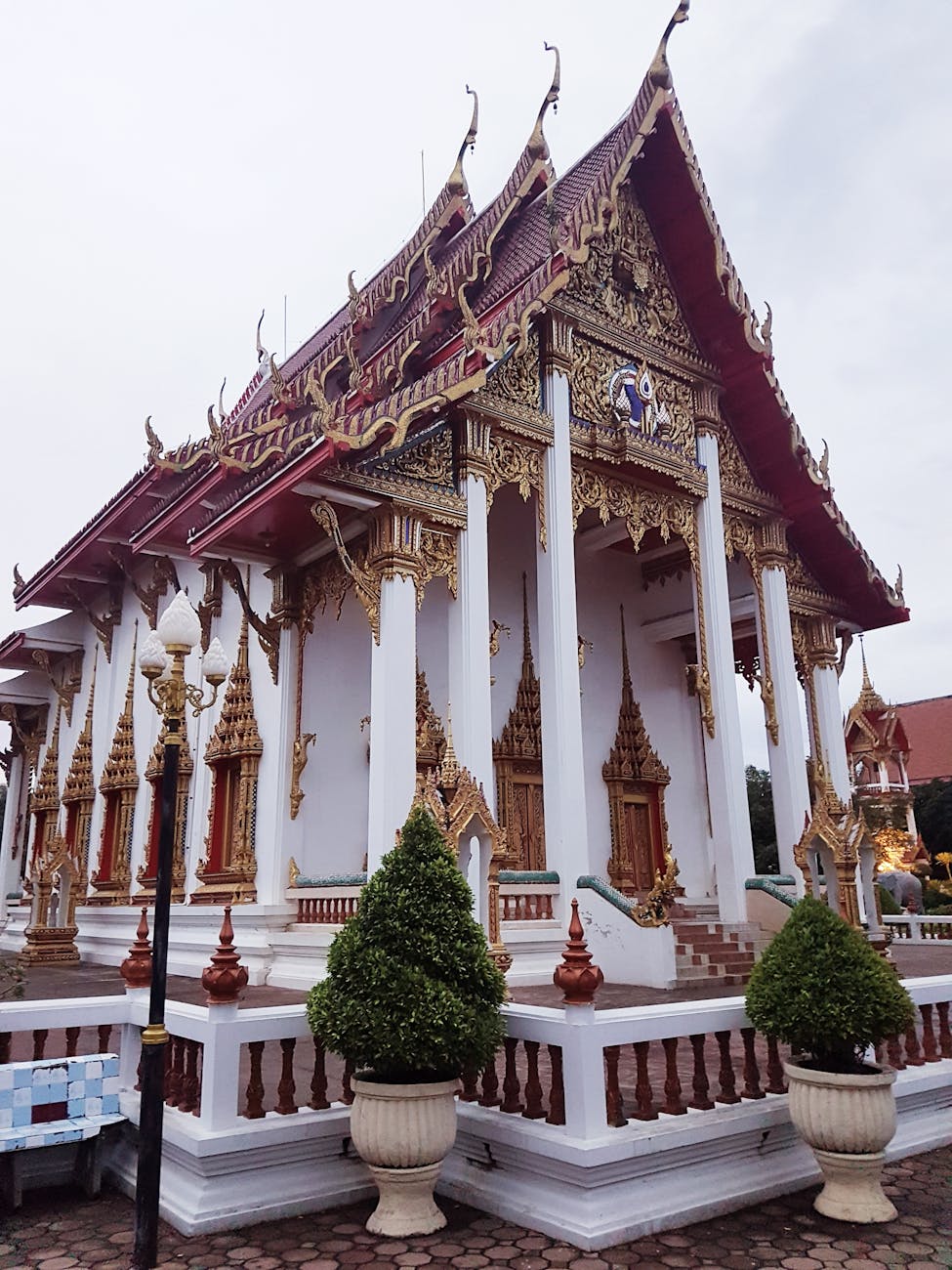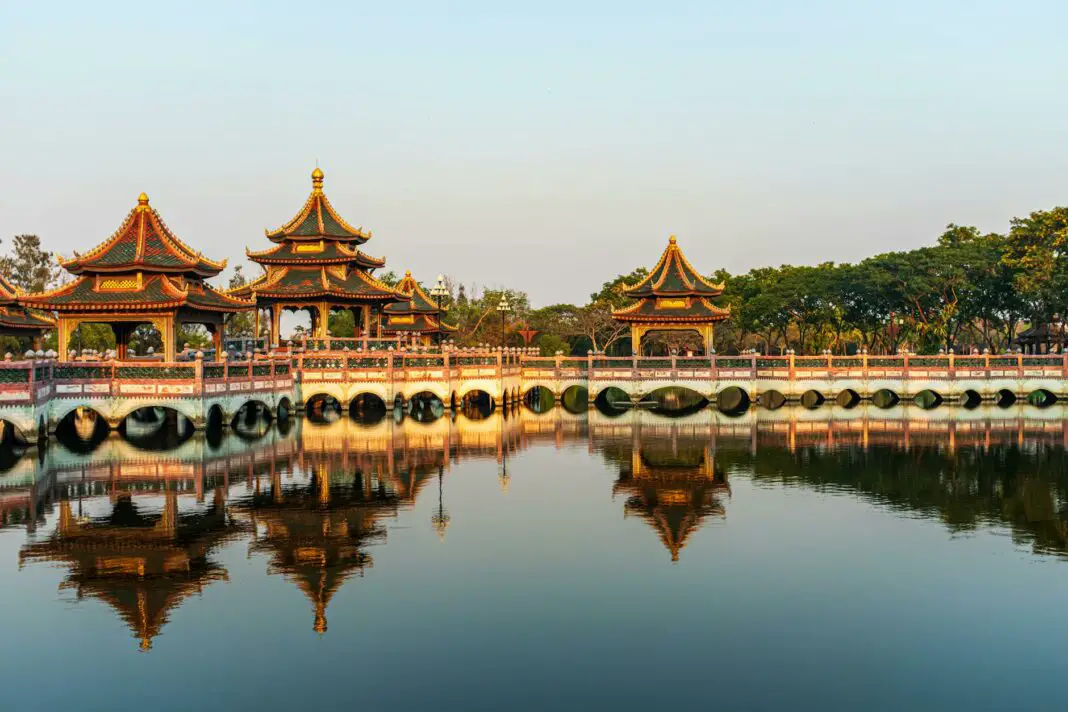Embarking on a trip to Thailand offers a plethora of experiences, from bustling markets filled with tantalizing street food to serene beaches that promise relaxation. However, one aspect of Thai culture often overshadowed by its more famous culinary and scenic attractions is Thai folk art. Is Thai Folk Art the Hidden Gem of Thailand? This captivating form of expression offers insights into the country’s rich history and vibrant traditions, presenting travelers with an opportunity to delve deeper into authentic Thai culture. Far from merely decorative, folk art reflects the beliefs, stories, and values of the Thai people, making it a subject worthy of exploration during any visit.
In this blog post, we will uncover the significance of Thai folk art, discuss various forms of it, and explore why it deserves a prominent place in your Thai itinerary. From intricate wood carvings to colorful textiles, Thai folk art represents a treasury of craftsmanship. Whether you are an art enthusiast or a curious traveler, understanding this unique artistic heritage can elevate your experience in Thailand. Let’s dive in and discover the hidden gems that often go unnoticed amid the visual splendor the country has to offer.
Table of Contents
- What is Thai Folk Art?
- Significance of Thai Folk Art
- Different Forms of Thai Folk Art
- Experiencing Thai Folk Art in Thailand
- Actionable Insights for Travelers
- Final Thoughts on Thai Folk Art
- Frequently Asked Questions
What is Thai Folk Art?
Thai folk art encompasses a broad spectrum of visual creativity that emerges from the everyday lives of Thai people. Unlike traditional fine art, which may often follow rules and techniques of the elite, folk art springs from an organic approach aimed at storytelling. Each piece can be a story, depicting local legends, folklore, or even daily activities. Furthermore, it invites you to explore the interwoven fabric of Thailand’s culture through crafts, unimaginable artistry, and profound meaning in various forms. The vibrant colors and bold patterns used are not just for aesthetic appeal; they mirror the emotions and historical influences that shape Thailand’s diverse regions.
Moreover, folk art is passed down through generations, fostering a sense of identity and continuity among the populace. Every item produced, from pottery to murals, showcases the traditional methods that artisans have honed over centuries. It’s a vibrant manifestation of cultural heritage that connects the past with the present, making it pivotal for understanding Thai society. When you engage with this art form, you gain a deeper appreciation for Thailand beyond its picturesque landscapes and delectable cuisine. Actively seeking out folk art during your travels can open up an immersive experience that satisfies your curiosity about both the country’s traditions and its people.
Significance of Thai Folk Art
The significance of Thai folk art within the context of Thai culture cannot be overstated. It serves as a vital conduit between generations, preserving stories and knowledge that might otherwise fade away. Each piece of folk art reflects the values, ideations, and circumstances of its time, revealing much about Thailand’s communal identity. Furthermore, this art form plays a monumental role in rituals and festivals, often being an integral part of celebrations that mark life stages and community milestones. This connection fosters unity among community members, ensuring that traditions do not dissolve but rather evolve.
Additionally, the economic impact of folk art is noteworthy. In many rural areas, artisans rely on traditional crafts for their livelihood, and their artistry attracts tourists seeking genuine Thai experiences. By purchasing folk art, visitors contribute directly to these artisans’ economies, supporting sustainable livelihoods that help maintain cultural practices. In these ways, folk art acts as a bridge between cultural preservation and economic sustainability, making it important for both travelers and locals. With each brushstroke and crafted detail, it weaves a narrative that enriches the collective memory of the Thai people.
Different Forms of Thai Folk Art
Exploring the different forms of Thai folk art is like embarking on an artistic journey that unfolds Thailand’s rich tapestry of culture. One prominent form is the art of traditional Thai textiles, such as mudmee and ikat weaving. These fabrics, often crafted using ancient techniques, are not only strikingly beautiful but also carry symbolic meanings and tell local stories. Wearing these textiles lets you feel connected to Thailand’s heritage, as specific patterns signify different regional identities and historical tales.
Another notable form is wood carving, particularly in the northern regions of Thailand. Artisans take pride in creating intricate designs that range from lamps to decorative figures, showcasing their skill and creativity. The detail involved speaks of a time-honored tradition where care is taken with each chiseling motion. Additionally, murals and paintings depicting Buddhist legends often capture moments of great spiritual significance. These murals are particularly prevalent in temples, showcasing the collaboration of daily life and spiritual teachings, making religious art accessible to all who visit.
Experiencing Thai Folk Art in Thailand
To fully appreciate the vibrancy of Thai folk art, you must immerse yourself in local experiences that go beyond surface interactions. Begin by visiting local markets, where traders often showcase unique crafts that reflect their heritage. Markets such as Chatuchak in Bangkok or the night markets of Chiang Mai feature stalls brimming with everything from handmade jewelry to traditional pottery. Such encounters provide an unparalleled opportunity to engage in conversations with artisans, offering you insights into their craft and inspiration.
Participating in workshops is another fantastic way to experience folk art first-hand. Imagine a morning spent learning to weave textiles or carve wood under the guidance of skilled artisans. These workshops not only enhance your understanding of the techniques involved but also foster a deep connection with Thai culture. Additionally, visiting local museums or cultural centers will enable you to explore the historical context behind various art forms. Many museums house collections that detail the evolution of Thai folk artistry, providing you with a comprehensive understanding of its significance across the ages. To truly appreciate and understand Thai folk art, you need to be an active participant in the culture and experiences that surround it.
Actionable Insights for Travelers
If you’re considering adding Thai folk art exploration to your travel itinerary, here are some actionable insights to enhance your journey. First, research local festivals that celebrate folk art; these events are often bustling with exhibitions and performances that highlight traditional craftsmanship. Engaging with locals during these celebrations will provide a richer experience, as you’ll gain personal insights into the art forms being presented.
Next, prioritize supporting local artisans by purchasing authentic folk art pieces rather than mass-produced souvenirs. This not only contributes to the local economy but also adds an authentic touch to your home decor, reminding you of your meaningful experience in Thailand. Additionally, consider documenting your adventures through photos and journals. Sharing your journey on social media can create awareness around the value of folk art, inspiring others to explore beyond typical tourist attractions. Moreover, seek recommendations from locals or guides on lesser-known artisans, as these hidden gems often provide a closer look at the heart of Thai culture.
Unlock the Treasures of Thai Folk Art
Exploring the multifaceted world of Thai folk art can dramatically enrich your experience in Thailand. Rather than merely scratching the surface, delving deeper into this enchanting realm opens up a treasure trove of stories, values, and history, all represented through breathtaking artistry. Each piece of folk art captures a moment in time, echoing the sentiments of everyday life and serving as an ongoing narrative of the Thai people. So, during your next visit, make it a point to seek out these hidden gems that reflect the soul of Thailand, as you will walk away with a newfound appreciation and understanding of this beautiful country. Allow your journey to transform into not just a vacation but a deeper exploration of culture, creativity, and community that will linger in your heart long after your return.
Frequently Asked Questions
- What makes Thai folk art unique? Thai folk art is a vibrant expression of culture and tradition, representing the local identity, beliefs, and everyday life of the Thai people. Its diverse forms and techniques, often passed down through generations, make it distinctly unique.
- Where can I find authentic Thai folk art? Authentic Thai folk art can be found at local markets, artisan shops, and cultural festivals throughout Thailand, especially in regions like Chiang Mai, Bangkok, and the Northeastern provinces.
- Can I participate in folk art workshops in Thailand? Yes, many local artisans offer workshops where visitors can learn traditional crafts, such as textile weaving, pottery making, and wood carving, providing a hands-on experience with Thai folk art.
- Why is it important to support local artisans? Supporting local artisans helps sustain traditional craft practices and empowers communities economically. Purchasing authentic folk art contributes to the preservation of cultural heritage and promotes sustainability.
Image Credit: Pexels





